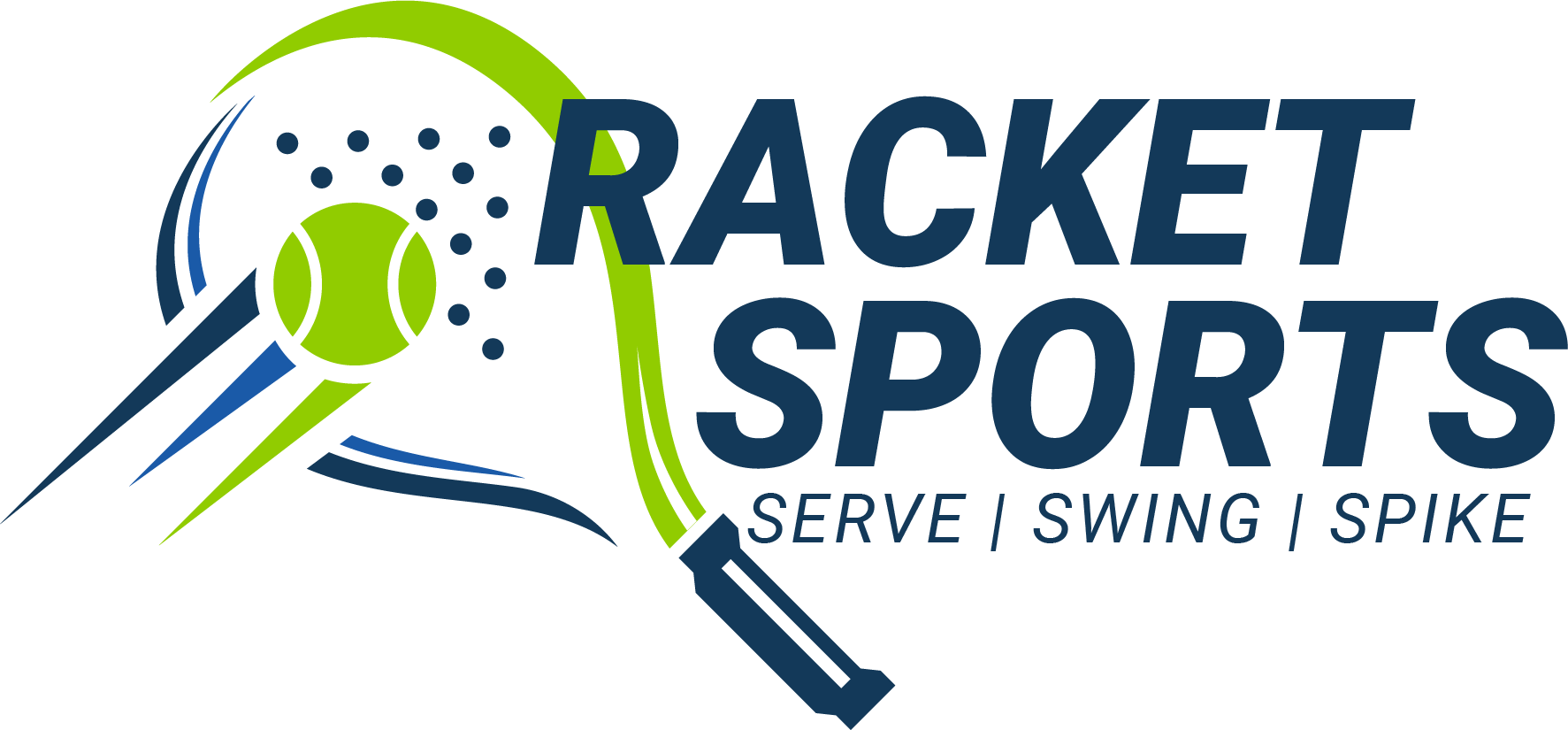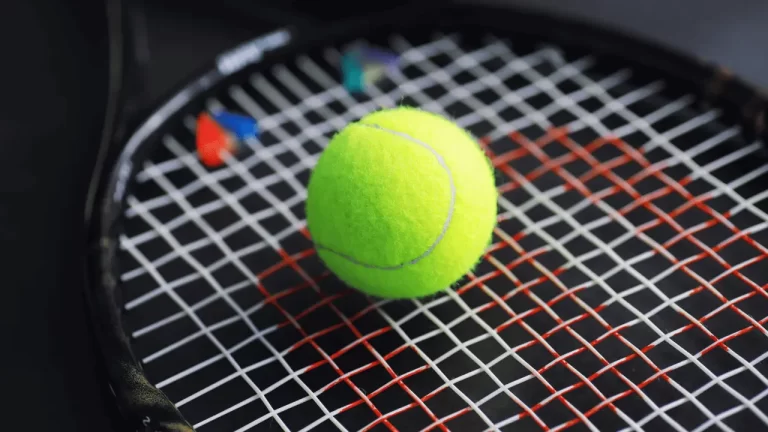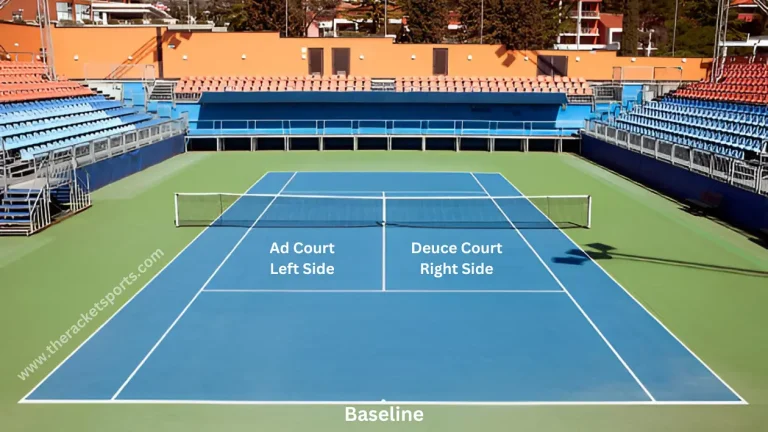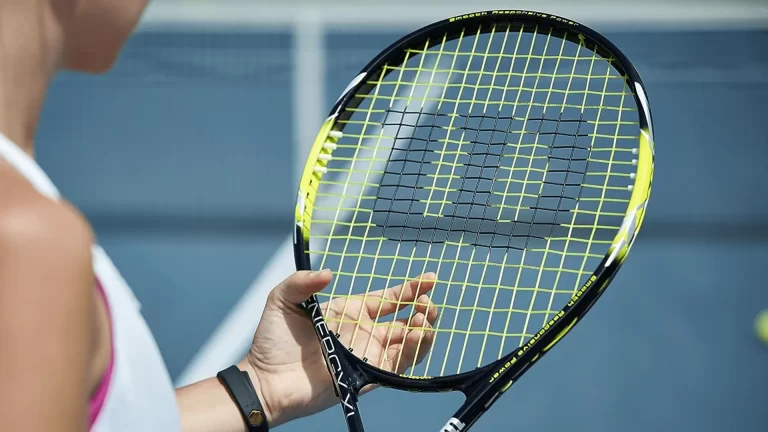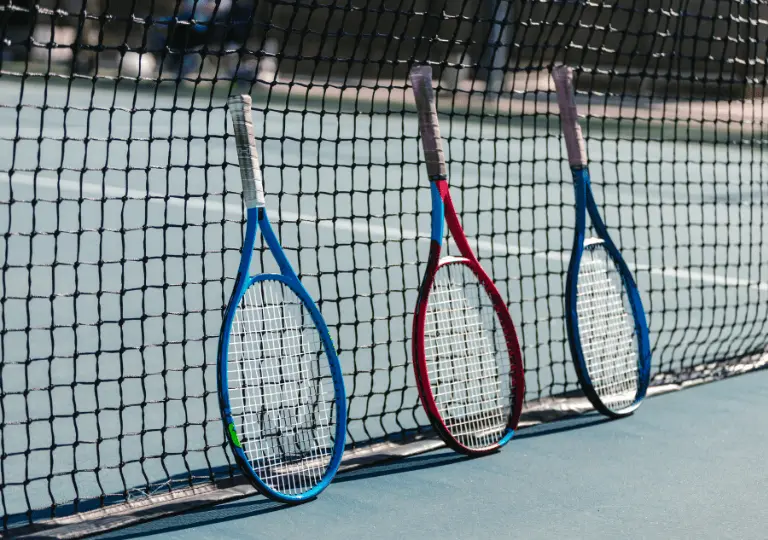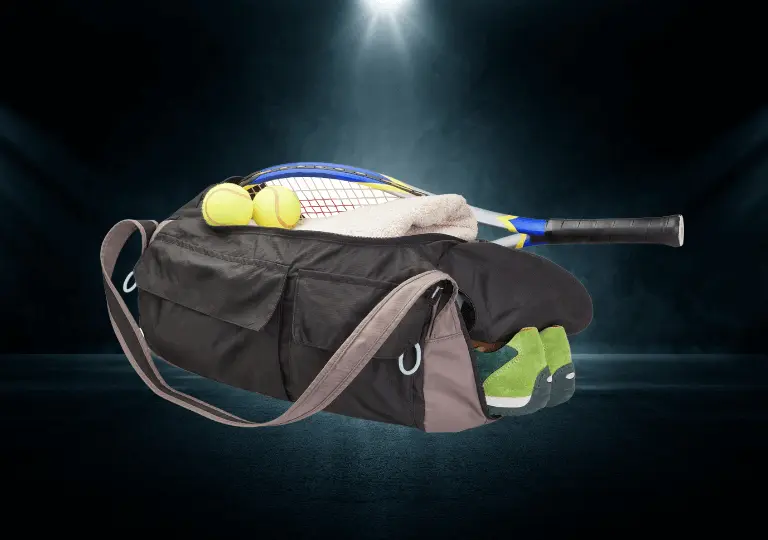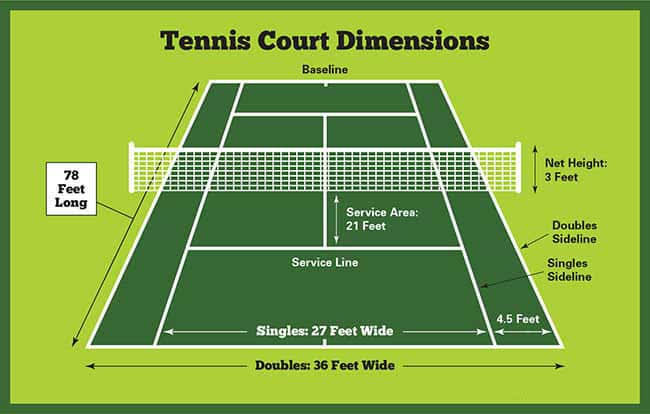How To Play Tennis – Expert’s Recommendations 2025
Tennis is a super fun sport many people enjoy. Maybe you’ve seen it on TV or at a park – in the past and now it’s the one where players hit a ball back and forth over a net. If you’re interested in learning how to play tennis, this simple article will teach you all the basic steps in a simple and exciting way. So gear up to enjoy a fun game of tennis with your buddies.
A Simple Guide: How To Play Tennis
| 1. Getting Started:– Learn about the divisions on the court: your side, your opponent’s side, baseline, service line, center mark, and court boundaries.- figure out the scoring system: Points starts from “love,” which is “0,” to 15, 30, and 40. The server is the first to announce its score. |
| 2. Serving and Scoring Guidelines:- Start the rally by sending the ball over the net into your rival’s service box.- try to maintain the ball’s presence within the court’s designated boundaries.- Points are earned for errors, balls that exit the playing area, and service faults. |
| 3. Playing the Game:– Alternate serving sides after each game.- Use different types of strokes: forehand, backhand, volleys, and more.- Strategize to outsmart your opponent by placing the ball strategically. |
| 4. Tactical Decisions:– Observe your opponent’s weaknesses and adjust your strategy accordingly.- Change sides on the court after odd-numbered games to account for court conditions. |
| 5. Tiebreak and Winning:– When the score is 6-6 in a set, you play a tiebreak game to decide who wins the set.- The first player to get 7 points, while being ahead by 2 points, wins the tiebreak.- Games and sets are often won by a 2-point margin. |
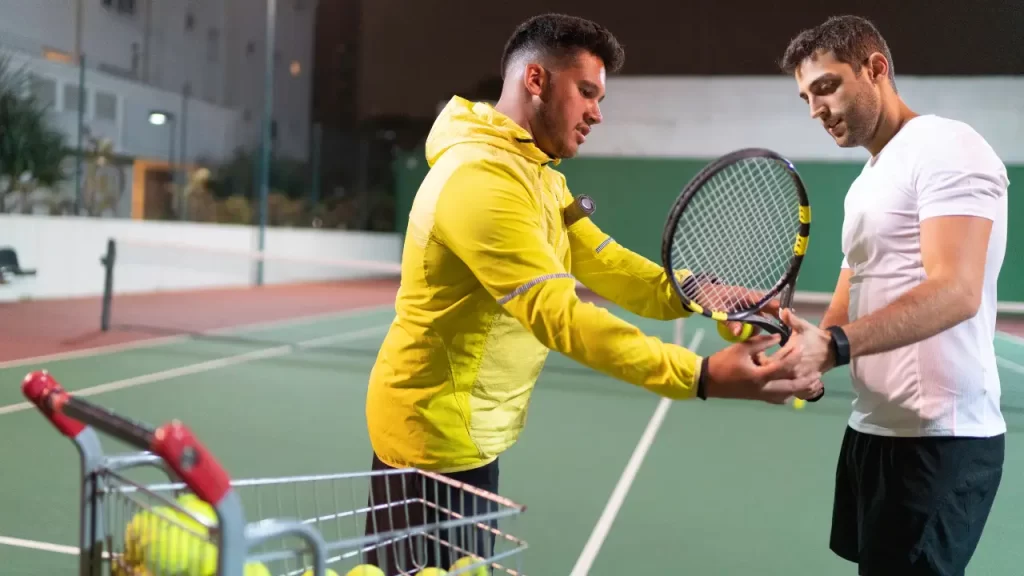
Benefits of Playing Tennis
Tennis isn’t just a game – it’s a fantastic way to stay healthy and enjoy yourself. Before learning how to play tennis, knowing its benefits can excite you even more. Let’s dive into why tennis is an incredible sport that offers both fitness and fun.
Boost Your Mood: Did you know that playing tennis can actually make you happier? It’s true! When you play, your body releases special chemicals that fight off feelings of sadness. These chemicals, like endorphins, act as happiness boosters. So, by playing tennis, you’re giving your mood a fantastic lift.
Stay Fit and Active: Tennis is a great exercise to maintain physical fitness. Burning calories while moving around the court and striking the ball keeps you in shape. When combined with a balanced diet, tennis can even help you shed extra weight and keep your muscles strong.
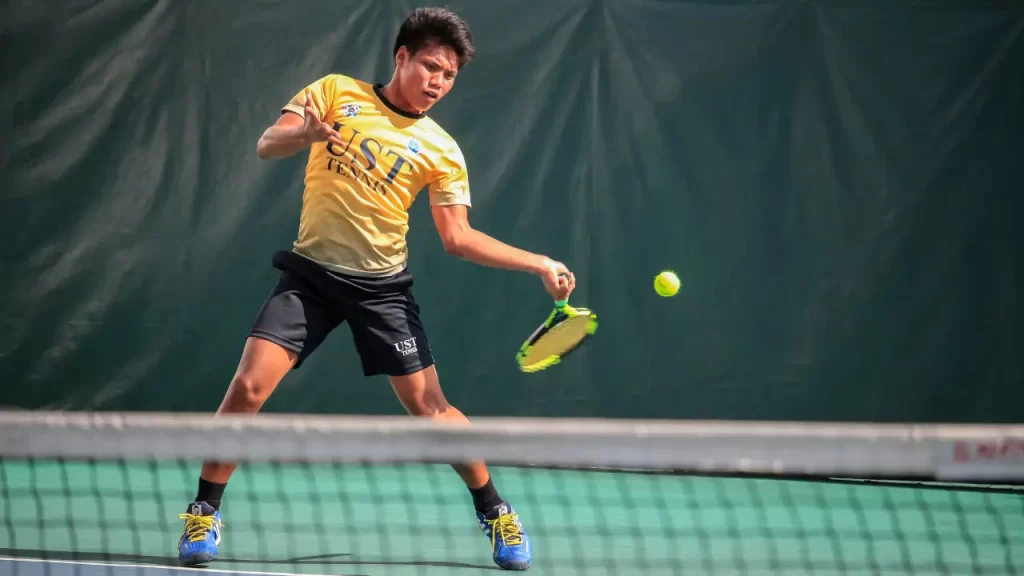
Boosts Energy: Despite the energy you put into playing, tennis actually increases your overall energy levels. Tennis gives you a natural energy boost whether you are usually tired or not.
Fights insomnia: Studies reveal that just 35 minutes of tennis each day can lead to a 65% improvement in sleep quality.
The benefits of tennis go beyond these points. It’s like a treasure trove of goodness for your body and mind.
Required Equipment to Play Tennis
Before you step onto the tennis court, it’s essential to have the proper equipment. Here’s what you’ll need:
Tennis Racket: A tennis racket is a unique tool you use to hit the tennis ball. It has a handle and a big flat part called the “head.” Rackets have a variety of shapes and sizes, so it’s necessary to pick one that fits perfectly in your hand. It could be challenging to play with a too big or heavy racket.
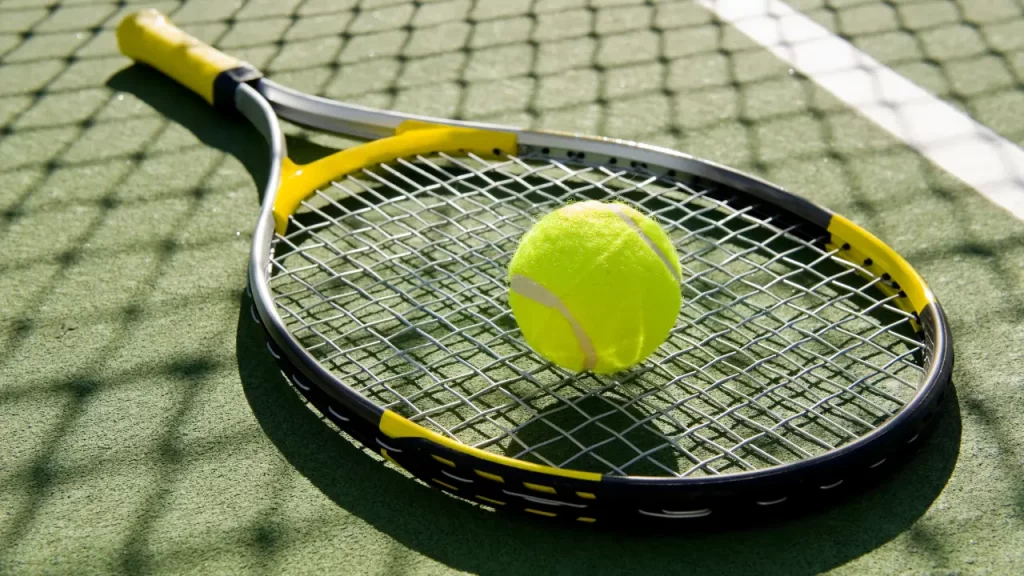
Choosing the Perfect Tennis Racket: When looking for the right tennis racket, it’s great to know that there are three main types of racquets. This knowledge can make your search much simpler. Now, let’s get a better look at each kind:
- Power Racquets: These racquets are like the superheroes of the tennis world. They are lightweight and have big heads. This combination makes it easy for you to hit the ball with power. A power racquet could be your best friend if you’re just starting or want to add more strength to your shots.
- Control Racquets: These racquets are a bit heavier and have smaller heads. Using this type of racquet, you can better control the ball’s direction and play effectively. If you’re looking to place the ball precisely where you want, a control racquet might be your match.
- Tweener Racquets: Tweener racquets give an excellent blend between strength and control. They’re not excessively heavy nor too light, and their head size is in the middle. If you’re not sure whether you want more power or more control, or if you want a bit of both, a tweener racquet could be the right fit.
Tennis Shoes: Tennis shoes are designed specifically for playing on the court. They have special soles that grip the surface, making it easier to run and stop quickly. Look for shoes that fit well and give your feet good support.
This is important because tennis involves a lot of movement, and the right shoes can prevent injuries and help you play your best.
Tennis Ball: In tennis, you use a tennis ball for rallying between players using their rackets. These balls are designed specifically for tennis, with a particular size and bounce to match tennis playing features.
Typically, you don’t need to bring your own balls to the court because they are usually supplied there.
Tennis Court with a Net: The tennis court is where all the action happens. It’s a rectangular area divided by a net. You’ll play on one side, and your opponent will be on the other. The net in the middle stops the ball from going to the other side too easily.
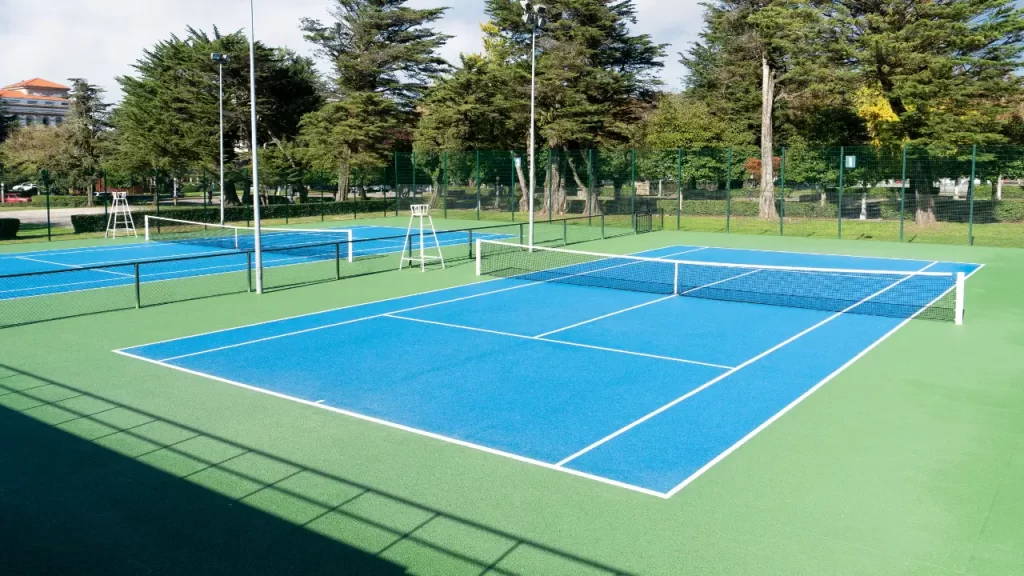
Wear Shoes with Good Lateral Support: Lateral support means your shoes help you move side to side quickly. Tennis involves a lot of sideways movements, so your shoes should provide good support to prevent your feet from sliding inside them.
This support can help you stay balanced and make swift movements on the court.
Getting to Know the Tennis Court
Before you start playing tennis on the court, it’s essential to grasp the various sections of the tennis court. Let’s break it down:
- Divided by the Net: The Tennis court is split into two sides by a net. One side is for you, and the other is for your opponent. Keep in mind, it’s not allowed to touch the net or hit the ball into it while playing the game, or you would get a fault.
- Baseline: baseline is the line area where you stand to make your first serve. This line lies farthest from the center net. It is the starting point of the game.
- Service Line: between the baseline and the net, there’s a narrow line called the service line. Your serves should land within the space between the net and this line.
- Center Mark: On the baseline, you’ll find a small line in the middle called the center mark. This helps you position yourself correctly for serving.
- Service Area: The space where you serve is divided into left and right sections by vertical lines. This helps you aim your serves accurately.
- Court Boundaries: The lines on the sides of the court, going perpendicular to the net, determine the boundaries of the court. The inner lines are for singles matches, and the outer lines are for doubles matches.
Familiarizing yourself with these court features will help you in moving around and play the game efficiently. Therefore, take some time and explore the court before you begin practicing.
Knowing Basic Rules of Tennis
Before you step onto the tennis court to play, knowing the basic Tennis rules is essential. These rules make sure everyone plays fairly and has a fun time. Here are some basics rules that you must know:
Keep the Ball in Play: During your serves in singles tennis, make sure the ball goes over the net and lands within the opponent’s service box. If the ball lands in the service box after touching the net, it’s known as a “let,” and you still get another attempt.
If any part of the ball touches the line, it’s considered in-play. During rallies, make sure the ball stays within the singles court boundaries, which are the inner sidelines for singles matches. In doubles matches, including the outer alleys.
Keep Score: Tennis has its own scoring system. When announcing the score, the server always mentions their own score first, even if it’s smaller than their opponent’s. For instance, if you happen to lose the first three points consecutively while serving, your score would be “love-40.”
Avoid Touching the Net: While you can move close to the net and use volleys, never touch the net during a point. Any contact with the net, intentionally or accidentally, results in losing the point.
Hold Your Racket: You must keep your racket in your hands throughout the game. It’s not allowed to throw your racket at the ball. Only use your racket to strike the ball; other parts of your body do not count. The ball stays in play even if it bounces off the handle or frame of the racket.
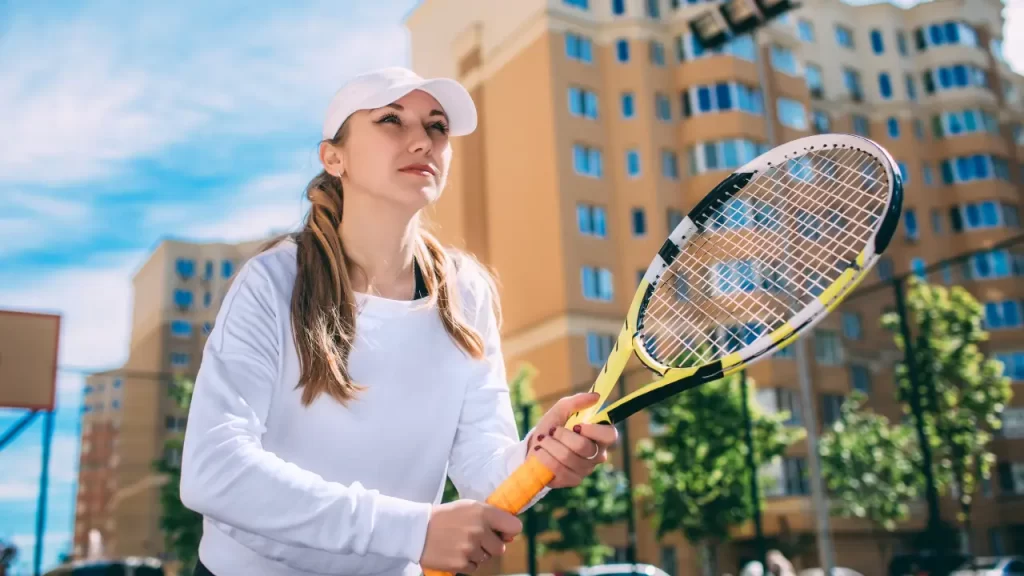
One Bounce Rule: The ball must bounce only once on each side during a point. The point is over if the ball bounces twice on your side. Additionally, even if the ball cuts your racket and bounces back, you can only strike it once.
Ball in the Air is in Play: If your opponent makes contact with the ball before it bounces on their side, even if it’s in “out” territory, the ball is still in play. The ball can’t be called out until it bounces.
Win by Two: The winning margin for both games and points is two. A tiebreaker is used if a set is tied at 6-6. The tiebreaker is won by the first player who reaches seven points (with a two-point advantage). In the final set, a tiebreaker could be played to 10 points; nevertheless, a two-point advantage is still necessary to win.

By understanding and following these basic rules, you’ll be well-prepared to enjoy a competitive and fair tennis match. Have fun and play your best while respecting these rules!
Tennis Scoring System
Tennis has a unique scoring system that might seem a bit confusing at first, but once you get the hang of it, it’s straightforward. You must know the scoring system when you start learning how to play tennis. Here is how tennis is scored:
Explanation of the Scoring System: In tennis, points are earned in sets and games. In tennis, a set is a collection of games played in a row, and each game contains points. To win the game, you must score, and out of three sets, you must win two of them. Or a victory in the set of five is given by a total of three wins.
Progression of Points: Instead of using the traditional counting method, tennis uses a special system:
- Zero point in the game is called “love”
- The first point you score is”15.”
- The second point scored is “30.”
- The third point is called “40.”
Ad-Phase and Advantage Scoring: When both players or teams have a score of 40-40 (also known as “deuce”), a special phase called the “ad phase” begins. whoever in the game scores the next point is given an advantage. However, if the same player scores two consecutive points will win. But, if the opponent scores, the score is again at the “deuce.”
Impact of Winning or Losing Points: Every point in tennis matters. Winning points brings you closer to winning the game, set, and match. Losing points can put you at a disadvantage. Remember that games are won by having a two-point lead, which is why the ad phase becomes crucial.
Overall, the tennis scoring system gives the sport a thrilling and strategic component. It’s essential to keep track of the score to know who’s winning and make the right moves to secure your victory. With practice, you’ll become comfortable with the scoring and be able to focus on your gameplay.
Steps to Play Tennis:
Here’s a step-by-step guide to playing tennis:
1. Deciding the Server: Before you start, flip a coin or use a racket spin to determine the server. The winner chooses whether to serve or receive the opening serve..
2. Standing on the Baseline: Stand on the baseline, which is the farthest line in the court. Pick a corner to serve from. Your opponent will stand in the diagonal corner on the opposite side.
3. Holding Your Racquet: Grip the racquet firmly with your dominant hand. Extend your arm out in front of you, parallel to your head.
4. Tossing the Ball: If you’re the server, throw the ball into the air using your free hand. Practice this toss to become comfortable with the height and timing.
5. Serving the Ball: When you serve, hit the ball at an angle over the net towards where your opponent stands. Try to aim for the part of their side that’s closer to you, and don’t forget to serve from the back of the baseline.
6. Running and Returning: After serving, quickly move to the opposite baseline corner. As the ball comes your way, use your racquet to hit it back toward your opponent’s side.
7. Continuing the Game: Keep playing until the ball goes out of the playing area or someone scores a point. If the ball lands on your opponent’s side, you get the point. Make sure to say the score and serve again if necessary.
Practicing Advanced Techniques:
1. Mastering the Overhead Return: When your opponent hits a high ball over your head, try an overhead return. Swing your racquet down with force to send the ball back with power.
2. Using Topspin: add topspin to your shots, and hit the side of the ball. This makes it bounce higher and faster, which can make it tougher for your opponent to hit back.
3. Learning to Slice: Practice slicing the ball by hitting it from underneath. This technique changes the ball’s direction and slows it down, making it harder for your opponent to reach.
4. Adapting to Different Court Surfaces: Explore playing on different court Surfaces types like hard, clay, or grass courts. Different surfaces change how the ball moves, its speed, and its bounce. You’ll need to change your strategies based on the surface you’re playing on.
5. Opponent’s Strategy: Pay attention to your opponent’s preferred shots and tactics. Use this knowledge to anticipate their moves and create effective counter-strategies.
6. Exploring Doubles Tennis: Give doubles a try, which involves two players on each side. Talk to and work with your partner to cover more of the court and play as a team.
By following these steps and practicing these techniques, you’ll enhance your tennis skills and have a rewarding experience on the court.
Conclusion
How to play tennis is super easy and exciting that just needs you to get started. Tennis is an amazing game that combines moving around, thinking smart, and trying your best. This guide must have shown you that tennis is more than just hitting a ball – it’s about learning the court, getting good at different moves, and using your brain to win.
Tennis is a fantastic sport for everyone, whether you’re looking to have fun, stay active, or compete in matches. Grab a racket, step onto the court, and begin your tennis journey. Keep in mind that the more you practice, the more you’ll improve, and the more fun it will be.
Frequently Asked Questions
How do I start a tennis game?
To start a tennis game, you need a coin toss or racket spin to decide who serves first. The winner chooses to serve or receive the first serve. Then, players stand on their baseline corners to begin.
What’s the scoring system in tennis?
Tennis uses a unique scoring system where points are counted as “15,” “30,” “40,” and then the game is won. If both players have a score of 40-40, it’s called “deuce.” The player who scores next gets the “advantage,” and if they win the next point, they win the game.
How do I serve the ball?
To serve, stand behind the baseline and hit the ball diagonally across the net into your opponent’s service area. Aim for the closer part of their side to make it harder for them to return the ball.
Can I hit the ball out of bounds?
No, you have to keep the ball inside the court boundaries. If the ball goes out of bounds or doesn’t land in your opponent’s service area during a serve, it’s called a “fault” or a point for your opponent.
What’s a tiebreak in tennis?
A tiebreak is played when the set is tied at 6-6. Players take turns serving, and the first to reach seven points with a two-point lead wins the tiebreak.
